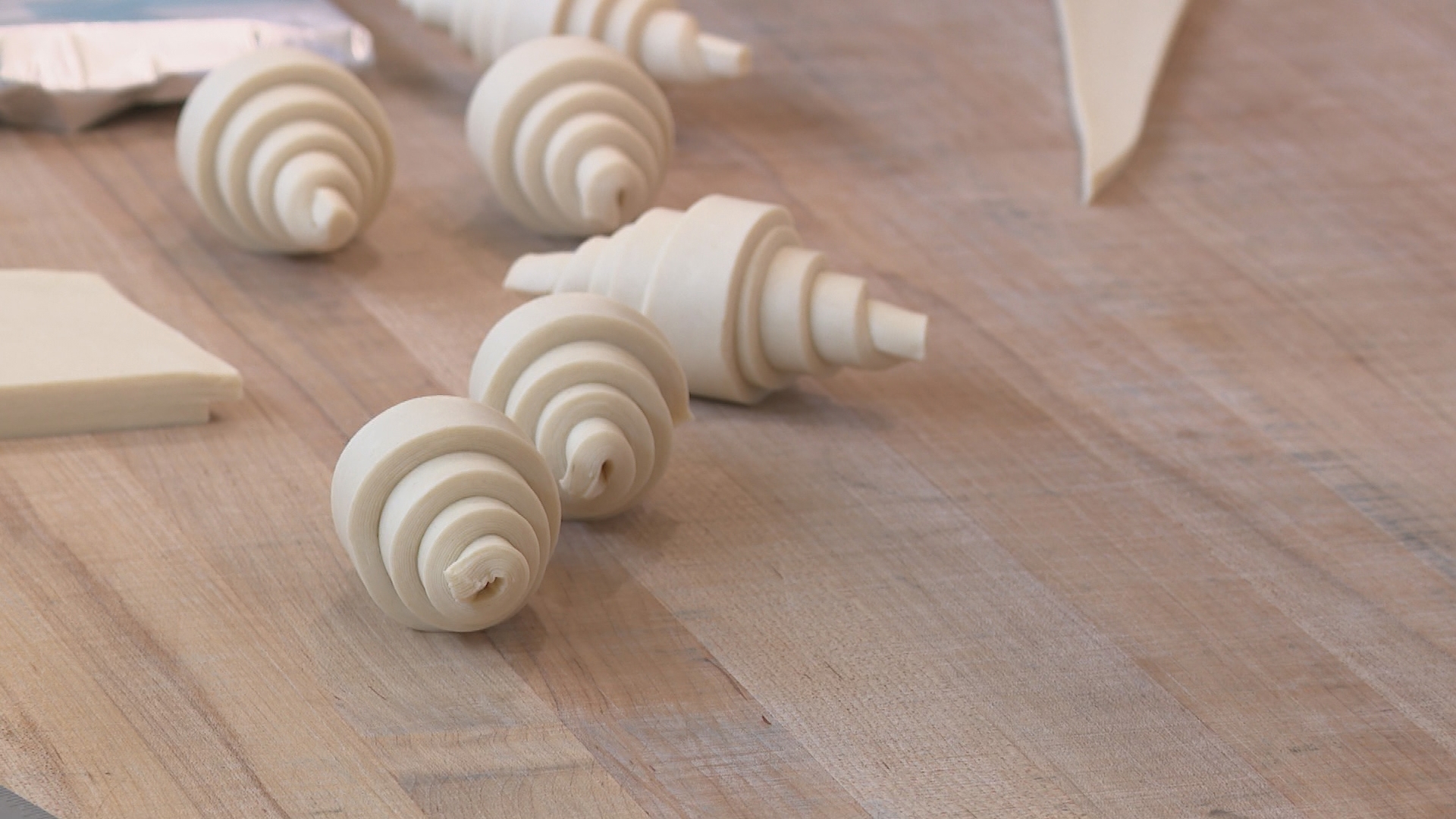PORTLAND, Maine — When you think of France, a plethora of foods come to mind. But perhaps the most iconic pastry has to be the croissant. It's buttery, flakey, and it's the perfect start to the day.
I had already tried the amazing croissants at Belleville in Portland before, and I heard a great story about how the bakery was started, so naturally I found myself heading over there to bake some croissants.
Upon walking in I was greeted with the best smells you could imagine. It was probably just butter, but it was amazing. I went to the back and met with owner Chris Deutsch.
If you know anything about croissants, it's probably that they are labor-intensive and require about three days to make. Yes, you read that correctly: It takes three days to make a croissant from beginning to end.
We started with the dough. Into the mixer we tossed some milk, water, salt, butter, two types of flour, scraps of other croissants, and yeast. Deutsch said the presence of yeast is what makes this dough different than puff pastry. Oh, and those scraps are so we don't waste any dough! Plus, it gives it a little extra flavor.
After the dough has some time to rest, it's time to punch it down and begin to roll it out. Here's the best part: They have a machine to do the work for us. It quickly rolls the dough thinner and thinner, similar to a pasta machine, so we can get it to the exact right thickness.
Once we're where we want to be, the dough goes into the cooler and the butter goes into the roller. Then we fold the two together. This is really where the croissant begins.
The butter is folded into the center of the dough so its fully encased. We want to make sure this is all fully sealed and cooled, so the butter doesn't smush out as we roll out the dough. We start to fold the dough like a book. These folds are how we get the layers in the croissants. As we continue to roll out the dough/butter, the layers get thinner and thinner, and when we bake it, the butter puffs up and becomes steam, giving us the airiness.
Now we go back and forth with folding the dough for more layers, then rolling it thinner, then folding, and rolling, and so on. It's important to keep the dough cold, so it needs to go in the freezer for a quick cool down before we can cut it into croissants.
It's important they all come out the same size and shape, so we used a ruler to measure and cut the dough into triangles. Then you stretch out the dough to give it a bit more length, and it will no longer resemble a perfect triangle. This is where it gets that iconic shape. Once they're rolled up, they are in their typical croissant form.
This reminded me of helping my mom make crescent rolls at home as a kid. These croissants are going to be infinitely better, but the rolling concept was similar.
After a quick proof and a pop in the oven, we had French croissants.
They were perfect. Everything I could ever ask for in a breakfast. A light yet somewhat filling pastry that fills that void you have in the morning, but not so much so that you feel weighed down for the day. It's not sweet, but it's also not really savory. It lives in a world between, which is what makes it perfect. It's not too much of one thing—other than butter—but it's nearly impossible to have too much of that. (Except for the deep-fried butter at a state fair, though. That's too much for me!)
The layers were everything you wanted them to be because it's crispy on the outside yet soft on the inside. Some people enjoy adding jam or other condiments, or maybe dip it in a cappuccino, but plain was fine for me. I also tried their pain au chocolat (chocolate croissant) and their almond croissant. All are absolutely delicious. But at the end of the day, nothing can compete with the traditional French croissant.
Oh! And I promised you a story.
Chris and his wife Amy have a cute love story. So French, right? Chris is French-American and Amy is a Mainer, and they lived in France together for years. They eventually chose to move back to Maine to start a family and follow their dreams of opening a bakery together. That's where Belleville came along, which they chose to name after a neighborhood in Paris, France.
Fun Fact: Chris said Europeans have come to Belleville and said their croissants are better than the ones in Paris. I questioned this (because how is that possible?!?) but apparently many French patisseries use frozen croissants to keep up with demand. Who knew?!
Thank you so much to Chris Deutsch and everyone at Belleville for having me out and teaching me how to make a traditional French croissant.

